It’s all in a name.
How to build a brand identity that connects.
Based on chapter 1 of Planting the Seed. A Guide to Launching Your Business, a Startup Business eBook
When you’re starting a business, one of the first and most important decisions you’ll make is what to call it. Your business name and logo are more than just a label or a design, they are the face of your brand. And for many potential customers, they’ll be the first impression of what you stand for.
In Chapter 1 of our free eBook, we break down how to approach naming and logo design in a way that feels grounded and aligned with your bigger vision. This blog post shares an overview on that chapter, helping you build a brand identity that feels intentional, memorable, and ready for market.
You can download our free eBook here if you would like to have further insights into launching a startup business.
Why a name matters more than you think.
A great business name can help you stand out, be remembered, and set the tone for everything that follows. It should reflect your values, speak to your audience, and feel like an honest extension of your offering.
Start with a simple brainstorm. Jot down words that relate to what you do, what you care about, and how you want people to feel when they come across your brand. You can use AI tools and name generators to help uncover combinations you might not have thought of.
Keep in mind:
Is it easy to say and spell?
Is it unique but clear?
Does it feel like you?
Make it meaningful, not just catchy.
As tempting as it is to chase a trendy name, what you really want is something that lasts and connects.
Here’s how to approach it:
Define your brand essence.
Before settling on a name, take time to clarify your values, mission, and target audience. What do you stand for? What makes your business different? This clarity will guide not just your name, but everything from your tone of voice to your visual identity.
Think about keywords.
Including a relevant word, slogan or catchphrase can help communicate what you do, especially when you’re new to the market. This can also give you a slight edge with SEO.
Keep it simple and memorable.
The best brand names are easy to recall and difficult to confuse. Think of the brands you know and trust, chances are their names are short, clear, and distinctive without being overly complicated.
Do the research before you commit.
Once you’ve shortlisted a few names, it’s time to do some quick checks to make sure they’re usable and available.
- ASIC Business Name Search: Use the ASIC Connect portal to see if your name is already registered or too similar to an existing business.
- Domain name availability: Check platforms like GoDaddy or Crazy Domains to secure a matching website domain.
- Social media handles: Search platforms like Instagram, Facebook, and LinkedIn to see if your name (or a close variation) is available for use.
- Trademark search: Visit IP Australia’s database to see if the name is trademarked. This step can save you from headaches down the track.
Pro Tip: Don’t panic if your ideal name isn’t available across every platform. A small variation, like adding “_co” or “studio,” can work just fine.
Designing a logo that works for you.
Once you’ve locked in your name, your logo is the next piece of your brand puzzle. It should feel consistent with the tone you want to set, whether it’s playful, polished, natural, bold, or anything in between.
If you’re just starting out and don’t have the budget for a logo designer, tools like Canva’s free logo maker is a great place to begin. It lets you explore colours, fonts, and icons with simple drag-and-drop features. Choose a layout that feels aligned with your industry, then customise it to suit your brand personality.
Keep your design clean and flexible. Avoid too many colours or overcomplicated graphics. You’ll want your logo to look just as good on a website as it does on a business card or social media profile.
When to call in the pros.
If you have the resources, investing in a professional logo and visual identity can elevate your brand significantly. A designer can create a bespoke look, offer guidance on colour psychology, and provide scalable assets for use across all platforms. They can also help develop a brand style guide that keeps your brand consistent and ensures continuity, which is especially useful as your business grows.
Consistency Is key.
No matter how simple or sophisticated your logo is, apply it consistently. From your website and Instagram to your invoices and email signature, every touchpoint is an opportunity to reinforce who you are and what you stand for.
If you want to take a deeper dive into all things startup, download our free eBook Planting the Seed: A Guide to Launching Your Business, a Startup Business eBook here.
At Seed and Sage, we’re here to help you build a brand that feels true to you and meaningful to the people you want to serve.
Set your startup up for success, one clear step at a time. If you need help, reach out to us for a consultation.



